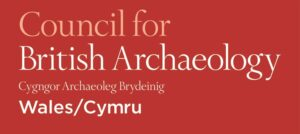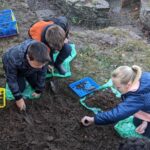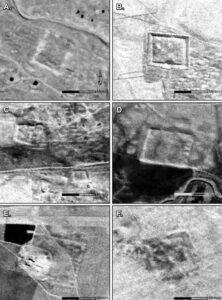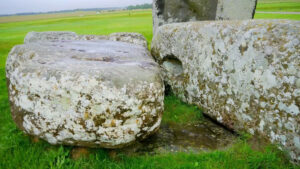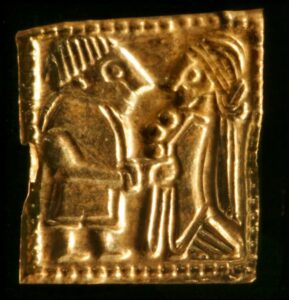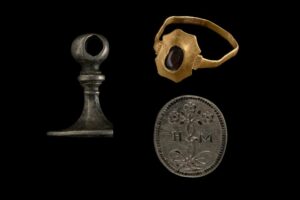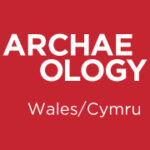The Red Lady of Paviland, also known as the Paviland Cave skeleton, is a fascinating discovery that has been the subject of much debate and discussion among archaeologists and historians. The skeleton, which dates back to around 33,000 years ago, was discovered in 1823 in a cave located on the Gower Peninsula in Wales. It is believed to be the oldest known example of human burial in Western Europe.
The skeleton was discovered by William Buckland, a geologist and theologian, who was the first to examine and describe the remains. At the time of the discovery, Buckland believed that the skeleton was that of a young woman who had died of tuberculosis. He named the skeleton the “Red Lady” due to the red ochre that covered the bones, which he believed was used in a funeral ritual.
However, later analysis revealed that the Red Lady was not a woman, but rather a man of the Upper Paleolithic period. The red ochre, which is now believed to have been used for symbolic or ritualistic reasons, was found to have been mixed with animal fat, suggesting that it may indeed have been used as a form of ceremonial burial.
The Red Lady of Paviland is an important discovery for several reasons. Firstly, the skeleton is the oldest known example of human burial in Western Europe. This suggests that even in the Upper Paleolithic period, humans were practicing some form of ritual or ceremonial burial.
Furthermore, its discovery has provided important insights into the lives of early humans. The skeleton’s close proximity to the coast suggests that these early humans may have relied on coastal resources, such as seafood, as a significant part of their diet. Additionally, the presence of tools and other artifacts found in the cave indicate that these early humans may have also been skilled at hunting and fishing.
The Debate over the Return of the Red Lady
In recent years, there have been calls for the Red Lady of Paviland to be returned to Wales, where it was discovered. This is based on the argument that the skeleton is an important cultural artifact that should be repatriated to the country of its origin.
However, the skeleton is currently housed at the Natural History Museum in London, where it has been since the 19th century. The museum has argued that the skeleton is an important scientific artifact that should be preserved for research and study.
The Red Lady of Paviland is a fascinating discovery that has provided important insights into the lives of early humans. The debate over the repatriation of the skeleton highlights the ongoing discussions about the ownership and preservation of cultural artifacts. Ultimately, it is important to consider the scientific value of the skeleton for research and study as well as the cultural significance for the country of its origin.
The Red Lady of Paviland is a unique and valuable discovery, but there is still much we do not know about this ancient individual and the society in which they lived. Further study of the Paviland Cave skeleton and the artifacts found in the cave can provide a wealth of information about the lives of our early human ancestors.
For example, DNA analysis of the skeleton could reveal important information about the genetic makeup and ancestry of the individual. Additionally, isotopic analysis of the bones can provide insights into the diet and environment of the individual.
Furthermore, further study of the artifacts found in the cave can provide valuable information about the technology and skills of these early humans. For example, the examination of the flint tools found in the cave can reveal information about the manufacturing techniques and the types of tasks these tools were used for.
The Red Lady of Paviland is a fragile and irreplaceable artifact that must be carefully preserved for future generations. It is important that the skeleton and artifacts are housed in a suitable environment where they can be protected from damage and deterioration. This includes proper storage and climate control, as well as regular conservation and maintenance.
In addition, it is important that the Paviland Cave and its surrounding area are protected and preserved as an archaeological site. This includes efforts to prevent damage from human activity and natural forces, as well as research and study that can provide valuable information about the site and its history.
Conclusion
The Red Lady of Paviland is a unique and valuable discovery that has provided important insights into the lives of our early human ancestors. Further study and preservation of the skeleton and artifacts can provide even more valuable information about the past. However, the ongoing debate about the repatriation of the skeleton highlights the importance of considering the cultural and scientific significance of such artifacts. It is important to strike a balance between preserving and studying these artifacts, while also respecting the cultural heritage and connection of the country of origin.
Image: Ethan Doyle White at English Wikipedia, CC BY-SA 3.0, https://commons.wikimedia.org/w/index.php?curid=38735326
